15 Hardy Ground Covers That Survive Snow and Ice
Winter weather can be harsh, but there are ways to help your garden weather the storm. Ground covers are a great solution, offering protection to the soil and other plants beneath them. Not only do they create a beautiful, low-maintenance space, but they also hold up against snow and ice. By choosing the right types, you can create a garden that thrives, even in the coldest temperatures. Let’s explore how these hardy plants work their magic in winter.
This post may contain affiliate links, which helps keep this content free. Please read our disclosure for more info.
Creeping Thyme (Thymus serpyllum)
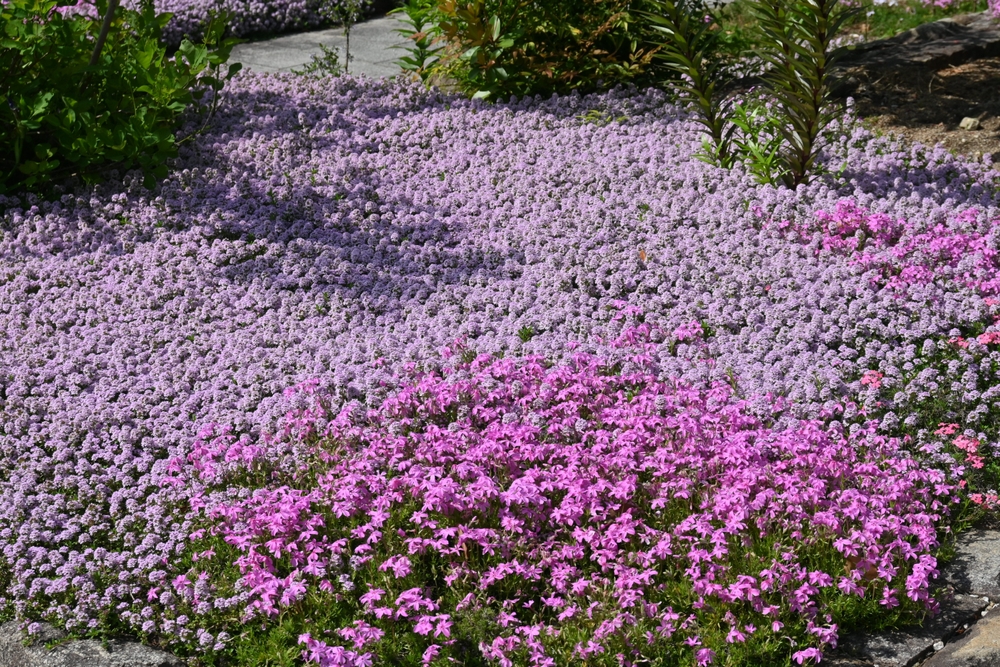
Creeping thyme is an excellent ground cover known for its ability to survive in tough winter conditions. This hardy plant has small, fragrant leaves that stay green during the colder months, even under snow and ice. Its dense growth habit helps protect the soil and prevents erosion. Creeping thyme thrives in well-drained soil and full sunlight, making it ideal for many landscapes. Additionally, its low-growing nature helps it resist winter damage from heavy snowfalls.
In winter, its small, aromatic leaves offer resilience against frost and ice. The plant forms a thick mat that insulates the ground below, keeping it stable during freezing temperatures. Creeping thyme is also known for attracting pollinators, making it a multi-functional addition to any garden. It’s an ideal choice for garden borders or between stepping stones. You can also walk on it without damaging its structure, as it bounces back with ease.
Snow-in-Summer (Cerastium tomentosum)
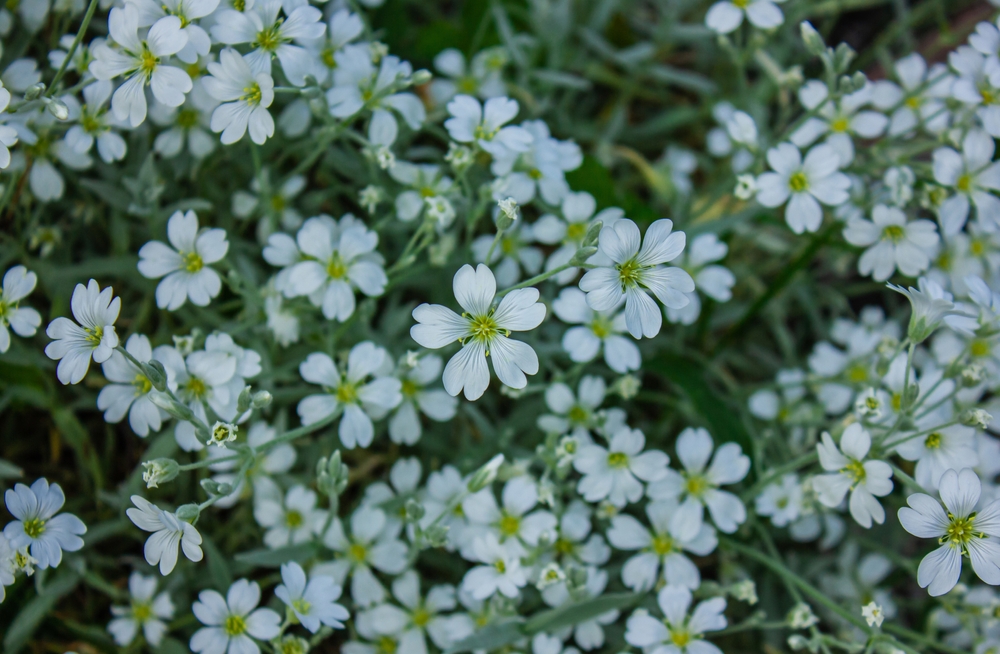
Snow-in-summer is a popular ground cover due to its ability to withstand the harsh winter elements. This low-maintenance plant has silvery-gray foliage and small white flowers that bloom in late spring, creating a soft, frosted appearance. During winter, it remains dormant but hardy, with its woolly leaves providing natural protection from ice and snow. Its spreading growth pattern makes it ideal for covering larger areas with minimal care. Snow-in-summer also helps suppress weeds by filling in gaps in the soil.
Despite the cold, this plant remains resilient due to its ability to retain moisture and resist frost. It thrives in well-drained soil and requires minimal attention once established. Snow-in-summer is an excellent choice for xeriscaping, as it can handle dry conditions. It works well in rock gardens or along the edges of pathways. The plant can survive freezing temperatures and recover quickly when spring arrives.
Wintercreeper (Euonymus fortunei)
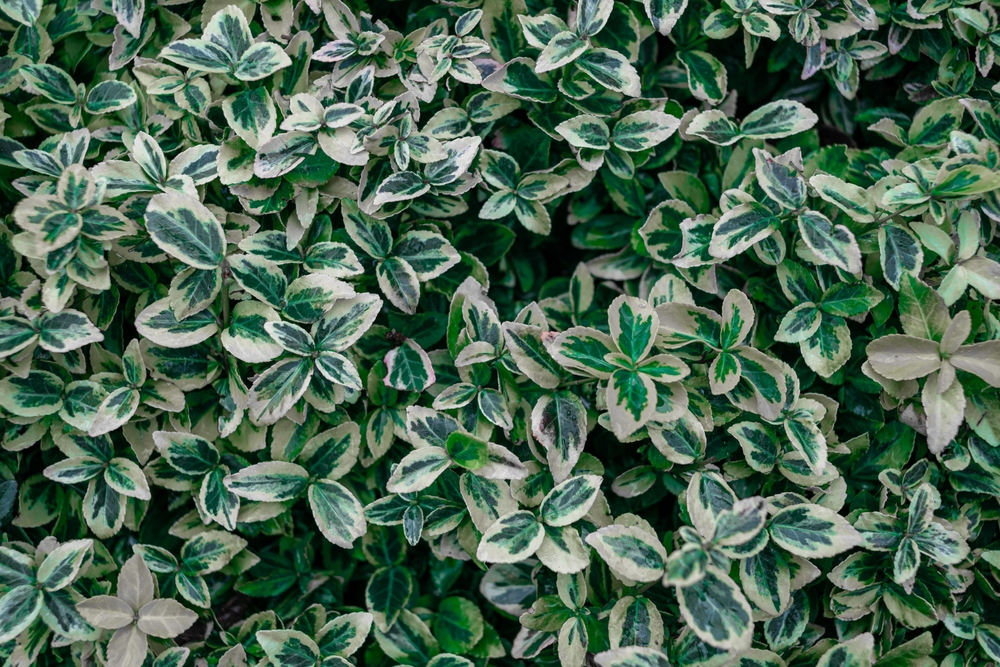
Wintercreeper is a tough evergreen ground cover that adds year-round interest to your garden. This plant features glossy green leaves that turn reddish in the winter, providing color throughout the colder months. It is highly adaptable, able to tolerate a wide range of soil conditions and temperatures. Wintercreeper thrives in full sun to partial shade and is incredibly low-maintenance once established. Its spreading habit helps it provide solid ground cover that holds up well under snow and ice.
The plant’s ability to survive harsh winter conditions lies in its evergreen nature, offering continuous protection to the ground below. Wintercreeper is also known for its ability to resist deer and other pests. As a fast grower, it quickly spreads and helps suppress weeds, reducing the need for constant maintenance. The plant is versatile enough for both ground coverage and as a climbing vine on fences or walls. It remains resilient even in the face of snow and frost.
Bearberry (Arctostaphylos uva-ursi)

Bearberry is a hardy ground cover that can thrive in cold, snowy conditions. With its small, leathery leaves, this evergreen shrub stays green even in winter, making it a great option for year-round coverage. Bearberry’s compact growth habit helps it survive heavy snowfalls, as its low, dense nature prevents damage from ice. This plant prefers acidic, well-drained soil and can tolerate both sun and partial shade. Bearberry also features small red berries that add a pop of color during the winter months.
During the winter, Bearberry acts as a protective layer for the soil, keeping it insulated from freezing temperatures. The plant is drought-tolerant once established and requires minimal care. Its ability to thrive in harsh conditions makes it ideal for alpine gardens or rocky terrains. Bearberry is also great for preventing soil erosion, especially on slopes. This low-maintenance ground cover provides beauty and function throughout the year.
Blue Star Creeper (Isotoma fluviatilis)
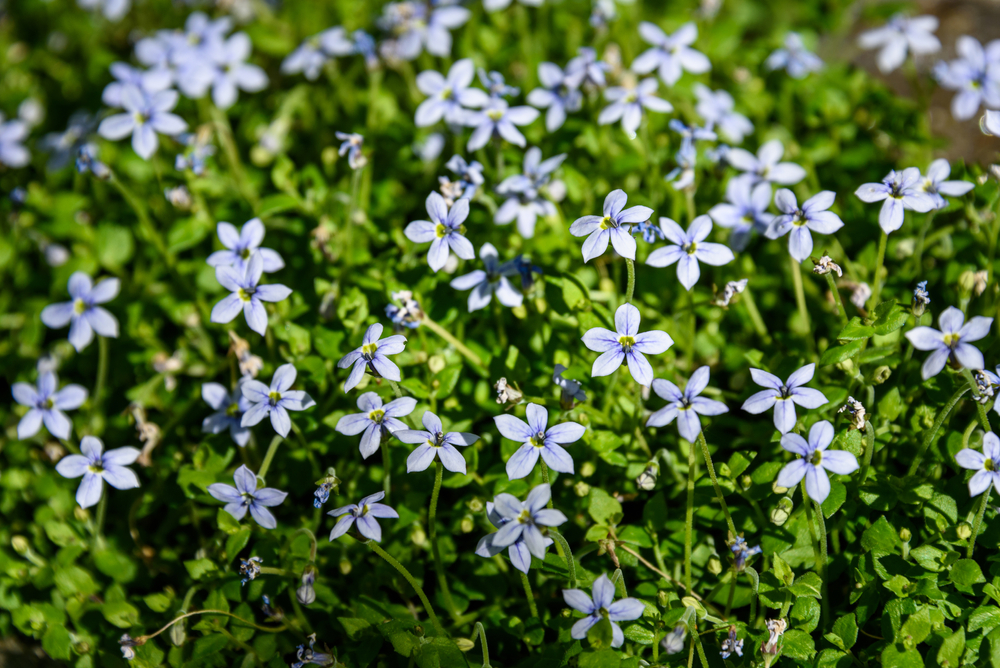
Blue star creeper is a fast-growing, low-maintenance ground cover known for its bright, star-shaped flowers. It forms a dense carpet of foliage that survives cold winters, providing excellent insulation to the soil. The plant is hardy and able to withstand snow and ice due to its strong, spreading root system. Blue star creeper prefers well-drained soil and can tolerate a variety of light conditions, from full sun to partial shade. Its evergreen leaves make it particularly valuable during the winter months when most plants are dormant.
In winter, blue star creeper remains green and continues to protect the soil underneath from frost. The plant’s mat-like growth prevents snow from compacting the soil, reducing the risk of erosion. Blue star creeper is a great choice for areas with moderate winter temperatures and is often used between stones or along garden paths. Once established, it requires little care and is relatively drought-tolerant. It also attracts pollinators during the warmer months, adding additional ecological value.
English Ivy (Hedera helix)

English ivy is a versatile and resilient ground cover that can withstand snow and ice during winter. Its thick, waxy leaves act as a natural shield against frost and freezing temperatures. This evergreen plant thrives in both sun and shade, adapting to a variety of garden environments. Once established, English ivy spreads quickly, creating a dense mat that helps keep the ground insulated. Its ability to thrive in harsh winter conditions makes it ideal for areas with cold climates.
The plant’s root system helps anchor it firmly in the soil, preventing erosion even during heavy snowfalls. English ivy is also low-maintenance, requiring little attention once it’s established. Its dense growth habit makes it an excellent choice for controlling weeds in garden beds. Additionally, English ivy is known for its ability to cover large areas quickly, making it a great option for ground cover in both residential and commercial landscapes. It remains green through winter, offering continuous coverage.
Japanese Spurge (Pachysandra terminalis)
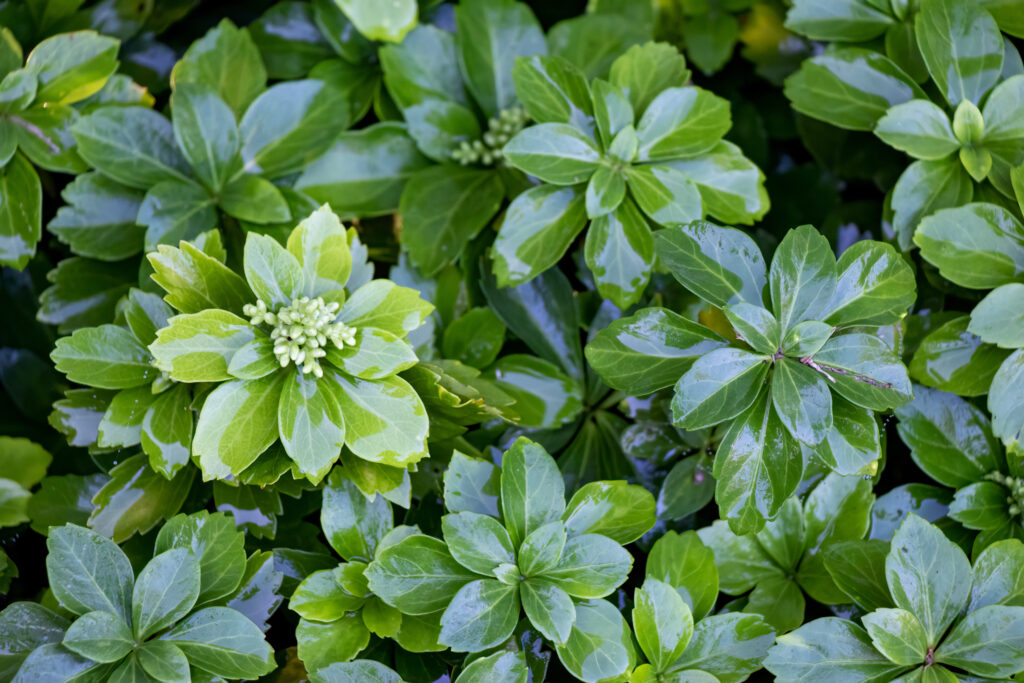
Japanese spurge is a popular ground cover that thrives in shaded areas and can handle freezing temperatures. This evergreen plant has glossy green leaves that maintain their color even during the coldest months. Its dense foliage provides a natural barrier against snow and ice, keeping the ground beneath protected. Japanese spurge is ideal for shaded gardens or areas with poor soil, as it can grow in these challenging conditions. The plant spreads quickly, filling in gaps and creating a uniform ground cover.
During winter, the evergreen leaves of Japanese spurge help maintain soil temperature, preventing frost from damaging plant roots. It’s a reliable option for covering slopes or areas where other plants might struggle. This ground cover can be grown in various soil types, as long as they are well-drained. Japanese spurge also helps prevent erosion by stabilizing the soil. Once established, it requires minimal care and can endure the cold weather with ease.
Creeping Jenny (Lysimachia nummularia)
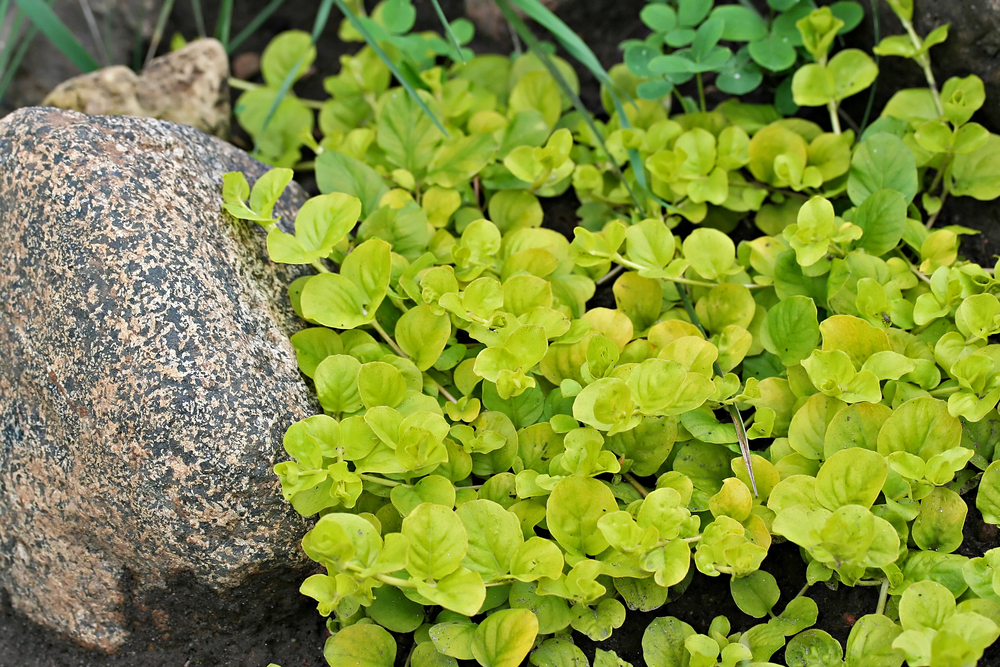
Creeping Jenny is a hardy ground cover that can tolerate cold winter conditions. This low-growing perennial features round, green leaves that turn golden-yellow in the fall, providing visual interest through winter. Creeping Jenny thrives in moist, well-drained soil and can tolerate full sun to partial shade. Its spreading habit makes it perfect for filling in large spaces and preventing soil erosion. The plant’s ability to resist frost makes it a valuable addition to any garden, even during the coldest months.
In the winter, Creeping Jenny acts as a protective layer for the soil, keeping it insulated from the cold. Its bright, yellowish foliage adds a pop of color to the otherwise dull landscape during winter. Creeping Jenny is also known for its ability to thrive in moist conditions, making it ideal for rain gardens or areas with poor drainage. This fast-growing plant is perfect for covering large areas and filling in gaps in garden beds. Once established, it requires little attention and is quite resilient against cold temperatures.
Ajuga (Ajuga reptans)
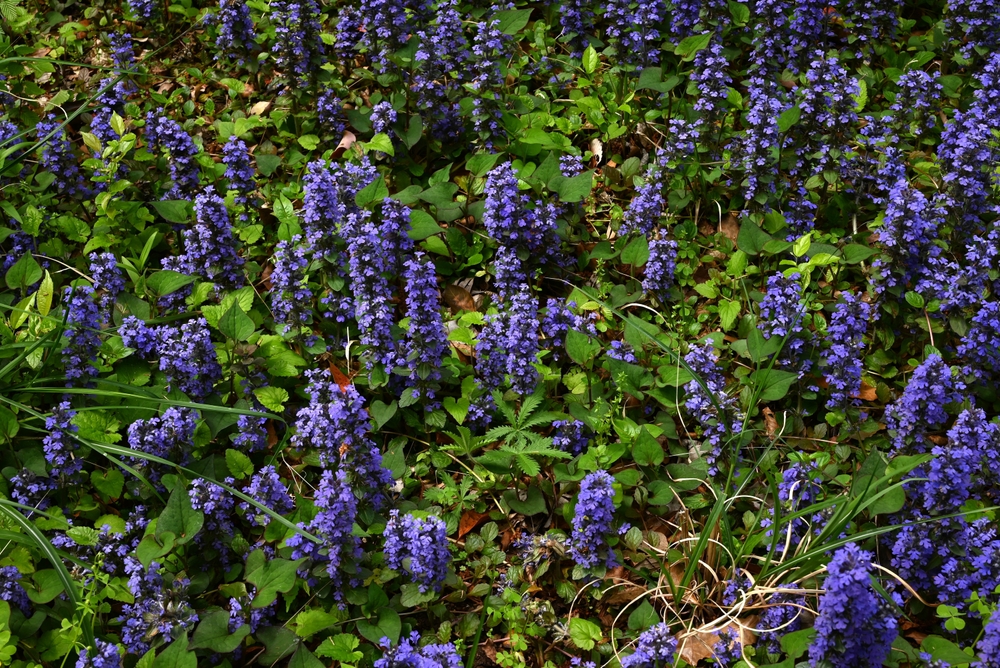
Ajuga, commonly known as bugleweed, is a hardy ground cover known for its vibrant foliage and ability to thrive in cold conditions. It forms a dense mat of foliage that stays green throughout the winter, providing year-round coverage. Ajuga can grow in a variety of soil types and light conditions, from full sun to partial shade. It’s a low-maintenance plant that requires little care once established. Its ability to withstand freezing temperatures and ice makes it an excellent choice for winter ground coverage.
Ajuga’s compact growth habit helps it resist damage from snow and ice. The plant’s deep roots hold the soil in place, preventing erosion during the winter months. Ajuga also adds visual interest with its purple, blue, or white flower spikes that bloom in spring. It’s perfect for filling in gaps between larger plants or along garden paths. With its resilience and beauty, Ajuga is a popular choice for gardeners looking for a tough ground cover for winter.
Woolly Thyme (Thymus pseudolanuginosus)

Woolly thyme is a resilient ground cover that thrives in cold climates, with its dense, woolly leaves helping it survive under snow and ice. This low-growing, evergreen perennial forms a soft carpet of silver-gray foliage, providing a protective layer over the soil. Woolly thyme is ideal for areas with poor soil or drought-prone conditions, as it can withstand tough environments. It grows well in full sun and well-drained soil, making it a versatile choice for different garden types. Its mat-forming nature helps prevent weed growth while offering winter protection.
The plant’s ability to survive harsh winter conditions lies in its dense, soft texture, which helps insulate the ground beneath it. Woolly thyme is drought-tolerant and will thrive with minimal care once established. Its strong root system ensures it stays firmly in place, even under the weight of snow. This plant is also an excellent choice for stepping stones or between cracks in walkways. It will bounce back every spring, providing a green carpet of foliage.
Lowbush Blueberry (Vaccinium angustifolium)

Lowbush blueberry is a hardy ground cover that excels in cold, snowy climates. This evergreen shrub features small, waxy leaves that turn red in fall and provide winter interest. Its dense growth helps protect the soil from erosion during the winter months. Lowbush blueberry thrives in acidic, well-drained soil and tolerates partial shade, making it ideal for a variety of garden settings. The plant’s ability to resist freezing temperatures allows it to stay resilient even under snow and ice.
In addition to surviving cold temperatures, lowbush blueberry produces small blue fruits in late summer, providing both aesthetic and edible value. Its ability to suppress weeds and cover the ground quickly makes it a popular choice for low-maintenance gardens. This ground cover also helps improve soil quality by adding organic matter over time. It is an excellent choice for gardeners looking to add both function and beauty to their landscapes. The plant is drought-tolerant once established and thrives in colder climates.
Hosta (Hosta spp.)
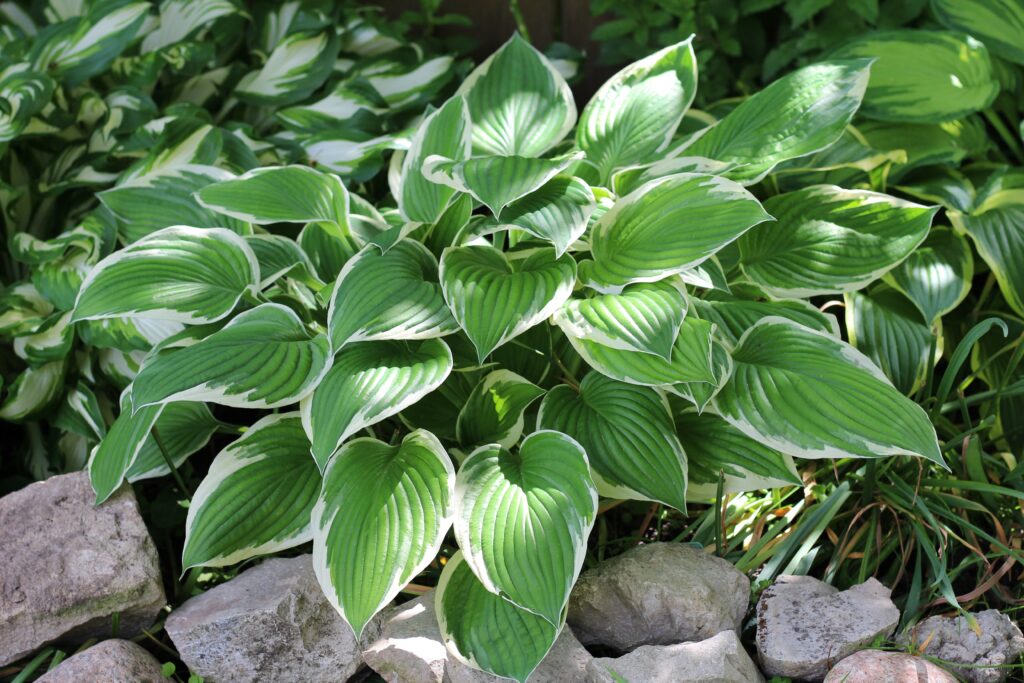
Hostas are a well-known perennial ground cover that can survive the cold winter months. Known for their large, attractive leaves, hostas provide excellent ground coverage and can withstand freezing temperatures. They thrive in shaded areas, making them perfect for spots that do not receive much sunlight. Hostas are low-maintenance once established and grow well in moist, well-drained soil. During the winter, their leaves die back, but the root systems remain hardy and intact.
Despite their winter dormancy, hostas offer resilience by protecting the soil underneath from harsh winter winds and freezing conditions. Their thick root systems anchor them firmly in place, helping them endure snow and ice. Hostas are also great for filling in gaps between taller plants and creating a lush, green ground cover during the growing season. In early spring, they begin to regenerate and offer fresh foliage. With their versatility and winter hardiness, hostas make a great addition to shaded gardens.
Ground Morning Glory (Convolvulus sabatius)

Ground morning glory is a vibrant, fast-growing ground cover that thrives in sunny areas. This plant’s ability to survive winter temperatures lies in its deep root system, which helps it withstand frost and ice. It features bright green leaves and striking blue, funnel-shaped flowers, adding color to the landscape throughout the year. Ground morning glory is ideal for covering large areas, as it quickly spreads and fills in garden beds. Its drought tolerance and ability to handle various soil types make it a low-maintenance option for hardy ground cover.
Even in the winter, ground morning glory continues to protect the soil beneath it. The dense foliage prevents erosion caused by snow and ice, while the plant’s resilient nature helps it bounce back each spring. Ground morning glory is also known for its ability to thrive in poor soil, making it a versatile option for gardens. This fast-growing plant can also be used in hanging baskets or window boxes, providing beauty wherever it’s planted. It’s a reliable ground cover for colder regions.
Periwinkle (Vinca minor)

Periwinkle, or lesser periwinkle, is an evergreen ground cover known for its ability to thrive in snowy and icy conditions. This low-growing plant has glossy, dark green leaves that stay vibrant throughout the winter months. Periwinkle is ideal for shaded areas and works well in areas with moist, well-drained soil. The plant spreads quickly, creating a dense carpet that helps protect the ground from frost and snow. Its deep-rooted system makes it resistant to freezing temperatures.
In addition to its ability to survive the winter, periwinkle offers year-round beauty with its purple, star-shaped flowers that bloom in early spring. This hardy ground cover also helps suppress weeds, making it an excellent choice for filling in garden gaps. Its dense foliage provides a layer of insulation to the soil beneath, protecting it from freezing. Periwinkle is easy to maintain and doesn’t require frequent watering once established. It remains a reliable ground cover in the coldest months.
Sweet Woodruff (Galium odoratum)

Sweet woodruff is a fragrant, shade-loving ground cover that thrives in cold climates. This perennial plant is known for its sweet scent, especially when the leaves are crushed, making it a unique addition to gardens. Sweet woodruff is a hardy ground cover that survives harsh winter conditions by forming a dense mat of green foliage. Its ability to spread quickly and cover the soil helps protect it from frost and ice. The plant prefers well-drained, moist soil and grows well in shaded garden areas.
During the winter, sweet woodruff remains dormant, but its root system stays intact, protecting the ground below. It’s a great choice for woodland gardens or shaded borders where other plants might struggle. Sweet woodruff’s ability to prevent soil erosion and its lovely scent during the warmer months make it a versatile addition to any garden. It’s also deer-resistant, making it a great choice for gardens in areas with high wildlife activity. This ground cover adds beauty and functionality, even through the colder months.
This article originally appeared on Avocadu.
